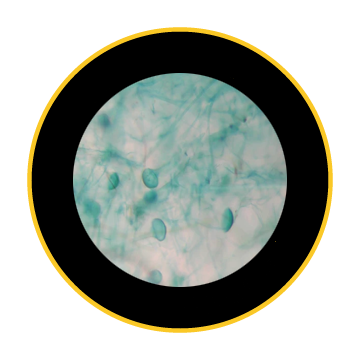| English | Français | Deutsche | Nederlandse | Italiano | Polskimi | Portuguesas | Español | 中国 | 日本人 | 한국어 |
 The seemingly delicate fluffed top of a Dandelion seed has amazing structural properties that allow the seed to travel through the air, as if attached to a tiny parachute before it drifts to the ground. It is the white elements in the fluff (known as pappus, a brush-shaped structure), that creates a ring-shaped low air pressure vortex wake behind the seed. And it's this low air pressure action that helps to keep the Dandelion seed "floating" for incredible distances (some seeds can travel over 100 kilometers in warm dry air). This is similar to the function of an airfoil shape in a bird's wing or an aircraft's wing where the shape of the airfoil creates lower pressure as air moves across the wing to allow it to fly. With pappus under the microscope, the intricate detail of one of nature's most elegant designs is revealed.
The seemingly delicate fluffed top of a Dandelion seed has amazing structural properties that allow the seed to travel through the air, as if attached to a tiny parachute before it drifts to the ground. It is the white elements in the fluff (known as pappus, a brush-shaped structure), that creates a ring-shaped low air pressure vortex wake behind the seed. And it's this low air pressure action that helps to keep the Dandelion seed "floating" for incredible distances (some seeds can travel over 100 kilometers in warm dry air). This is similar to the function of an airfoil shape in a bird's wing or an aircraft's wing where the shape of the airfoil creates lower pressure as air moves across the wing to allow it to fly. With pappus under the microscope, the intricate detail of one of nature's most elegant designs is revealed.

This slide specimen of Dandelion fluff appears blue because of the Methelyne Blue stains used to highlight the structure against the background. Without the stains, the fluff appear generally colorless making it more difficult to examine the subtle structure. Specimen staining is just one technique to help students researching microscopic specimens to determine what they are (their morphology).
The common name 'Dandelion' is derived from the French word 'dent-de-lion', which translates to 'Lion's Tooth'. These flowering plants are of the Taraxacum species, a large genus of flowering plants in the family Asteraceae, which are native to Eurasia and North and South America. Two species, T. officinale and T. erythrospermum, are found worldwide.

See all Microscopes from Explore Scientific

